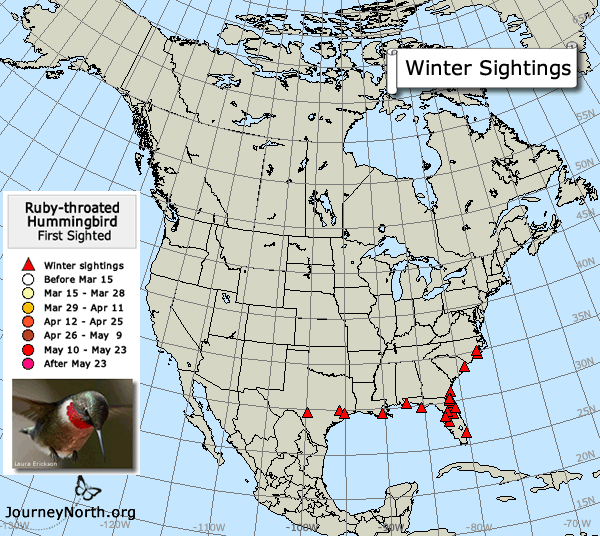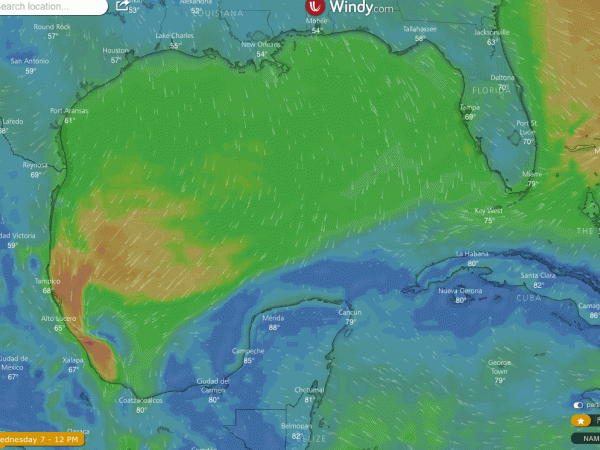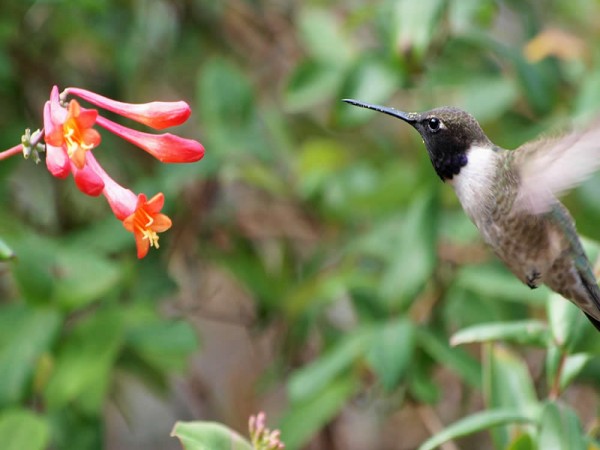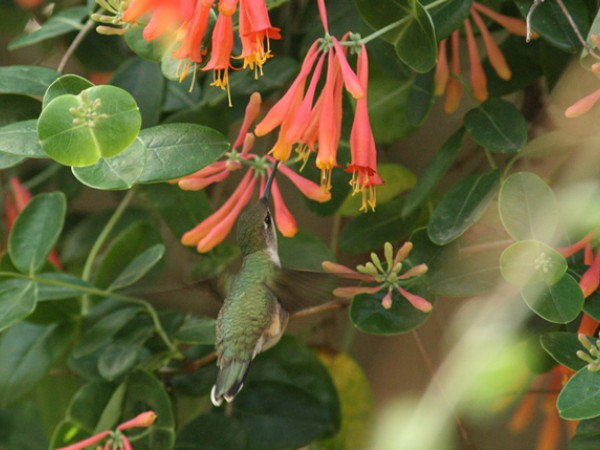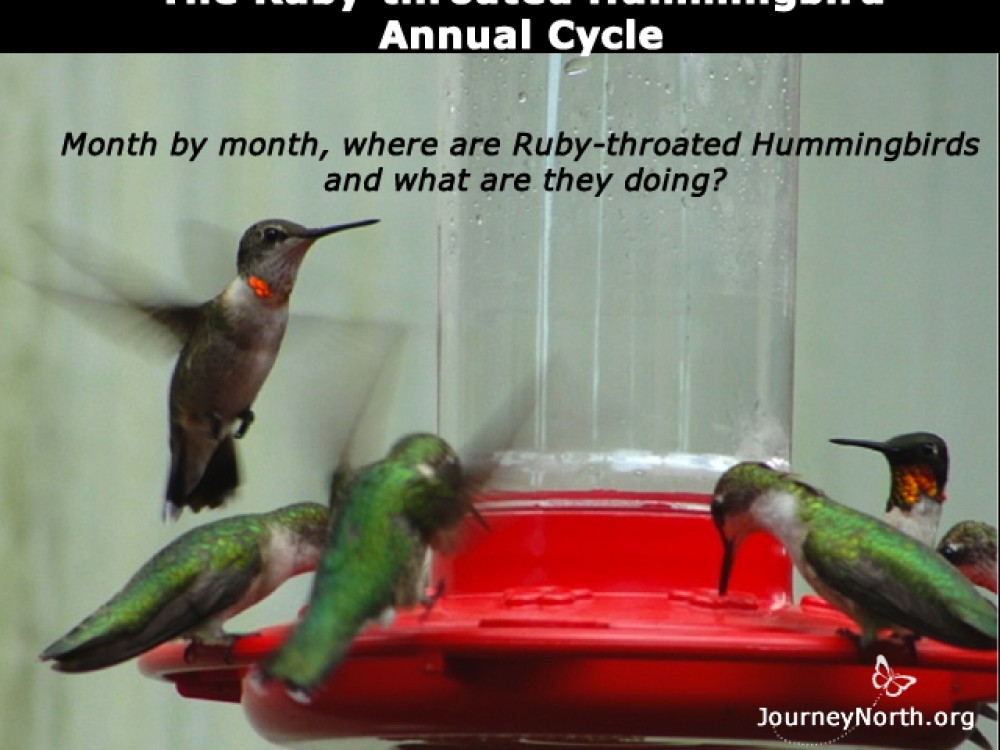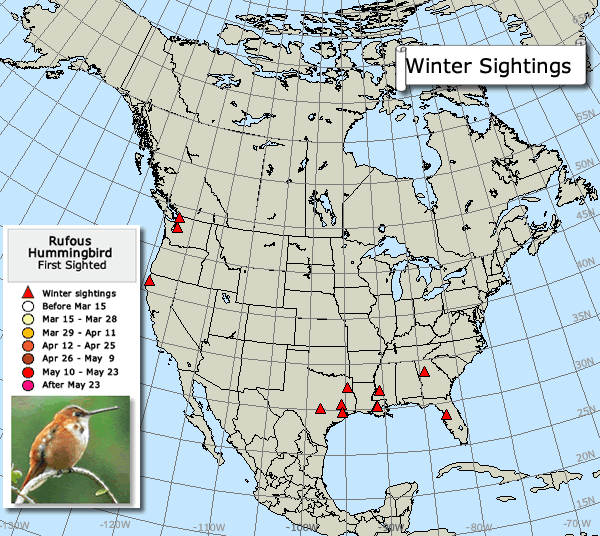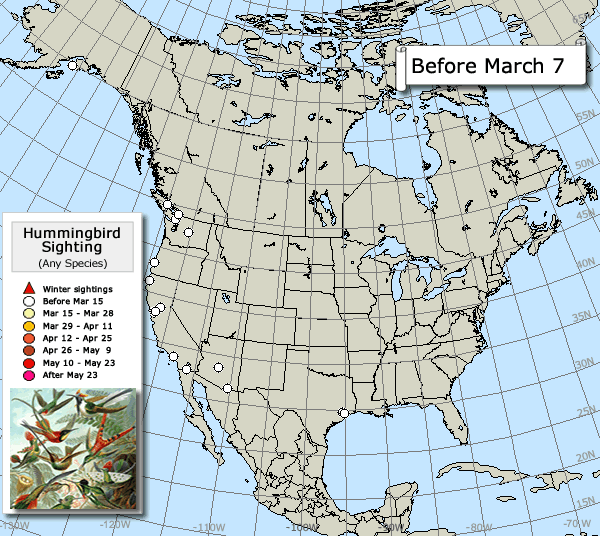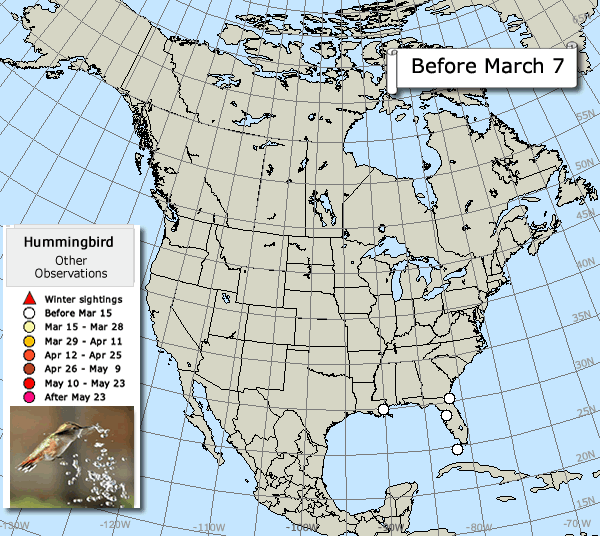Slow Start
Variable winds and weather this week brought starts and stops to early Ruby-throat migration.
Migration is Fickle
The strong southerly Gulf winds of early March that gave a push to the first Ruby-throats' arrival along the Gulf Coast states have shifted. Powerful storms bringing precipitation and wind from the north are causing difficult conditions this week. Whether birds are returning north over a land route via Mexico and Texas, or by sea over the Gulf of Mexico, they are best to sit tight till this blows over.
Early Sightings
Early arrivals are now being reported in Texas, Louisiana, Florida, and Georgia. These early birds may have trouble finding fresh flower nectar in some areas where cold winter temperatures have killed off blooms.
Louisiana
"We have lost so many blooming plants in this area. At this time of year, the bottle brushes in my back yard are like a beacon to arriving hummers, but so far, they are flowerless! I have so little blooming I hope I they'll come." Metairie on February 28th.
Florida
"First thing this morning saw 1 and this afternoon there were 3. Happy happy." Pensacola on March 7th.
Western Species
Black-chinned hummingbirds winter in Mexico and migrate north to the lowland deserts and mountainous forests of the western United States. Several first sighted Black-chins were reported throughout Texas this week.
"A male Black-chinned hummer buzzed the front porch at about 6pm." Fredericksburg, Texas on March 4.
"At least one Black-chinned male, returns every hour or so, could be more than one." San Antonio, Texas on March 4.



